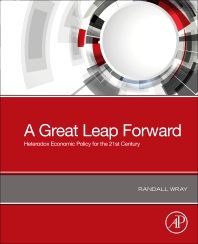
Publications
Who Are the Truly Poor?
Patterns of Official and Net Earnings Capacity Poverty, 1973–88
In this paper we study changes in the prevalence and composition of poverty in the United States over the 1973–1988 period, focusing on the first and last years. Over this period, official poverty rose from 23.6 million people (11.4 percent of the population) to 31.9 million (13.1 percent), passing over a peak in the recession of 1981–1983 of over 15 percent of the population.
The official definition of poverty in the United States compares the total income of families to an officially designated "poverty line" that varies with the size and composition of the family. If the income of a family falls below its poverty line, it is said to be poor. Total poverty in the nation is the sum of the individuals living in families whose income falls below their poverty line.
One of the most persistent and fundamental criticisms of the official definition is its reliance on a single year of cash income of a family. For many families, annual income is a fluctuating figure. Unemployment, layoffs, income flows from self-employment, the decision to undertake mid-career training or to change jobs, or health considerations may all cause the money income of a household to change substantially from one year to the next. A second fundamental problem with the official definition is its heavy dependence on tastes—in particular, the tastes of the members of the household unit for income versus leisure.
Both theoretical and empirical work in economics have recognized these limitations of money income as a measure of economic well-being. Many studies have relied on the average of a number of years of a household's income in order to gain a better estimate of "normal" income—income purged of its transitory elements. Others have taken observed, annual consumption to be a better estimate of real economic well-being than annual income (e.g. Mayer and Jencks, 1991). Consistent with the multiyear perspective, early work by Ando and Modigliani (1963) emphasized a life-cycle perspective. They argued for a measure based on a household's optimal level of real consumption in a period, given the presence of the unit's total resources over its remaining lifetime. Becker's (1965) concept of "full income" extends this concept still further, and includes the time available to the household to be allocated to either work or leisure. A further refinement of this full income measure would adjust for differences in the size and composition of the consumption unit, arriving at a concept of potential real consumption per equivalent consumer unit. Such a concept forms a definition of economic welfare or economic position which rests on economic theory and which reflects a more comprehensive set of considerations than one year of cash income (Moon and Smolensky, 1977).
Here we set forth an empirically tractable measure of economic position—Net Earnings Capacity—which seeks to reflect such potential real consumption. This measure abstracts from transitory events and phenomena, unlike current cash income. It also abstracts from individual tastes for income relative to leisure, again differing from the current income measure. And, it reflects the potential of the consumer unit to generate real consumption. Finally, it adjusts for the size and composition of the family unit. Net Earnings Capacity is designed to measure the potential of a family to generate an income stream (which can then be used to support its members) were it to use its human and physical capital to capacity. Individuals living in those households with the lowest levels of Net Earnings Capacity relative to their needs are considered to be the nation's "truly poor" (Garfinkel and Haveman, 1977).
We define the concept of Net Earnings Capacity more rigorously, and discuss the empirical techniques that we use in measuring it. Section III presents our empirical estimates of the prevalence and composition of Net Earnings Capacity poverty over the 1973-1988 period. We contrast the nation's "truly poor" families with those families designated as the nation's ''official poor." In Section IV, we estimate the probability that a variety of prototypical families— families with particular constellations of characteristics—will be either officially poor or Net Earnings Capacity poor. Changes in these probabilities over time will indicate both changes in the underlying character of true poverty in the United States and the extent to which the standard poverty measure conveys an inaccurate picture of the true patterns of low economic position. In the final section, we summarize our findings and indicate some of their policy implications.

